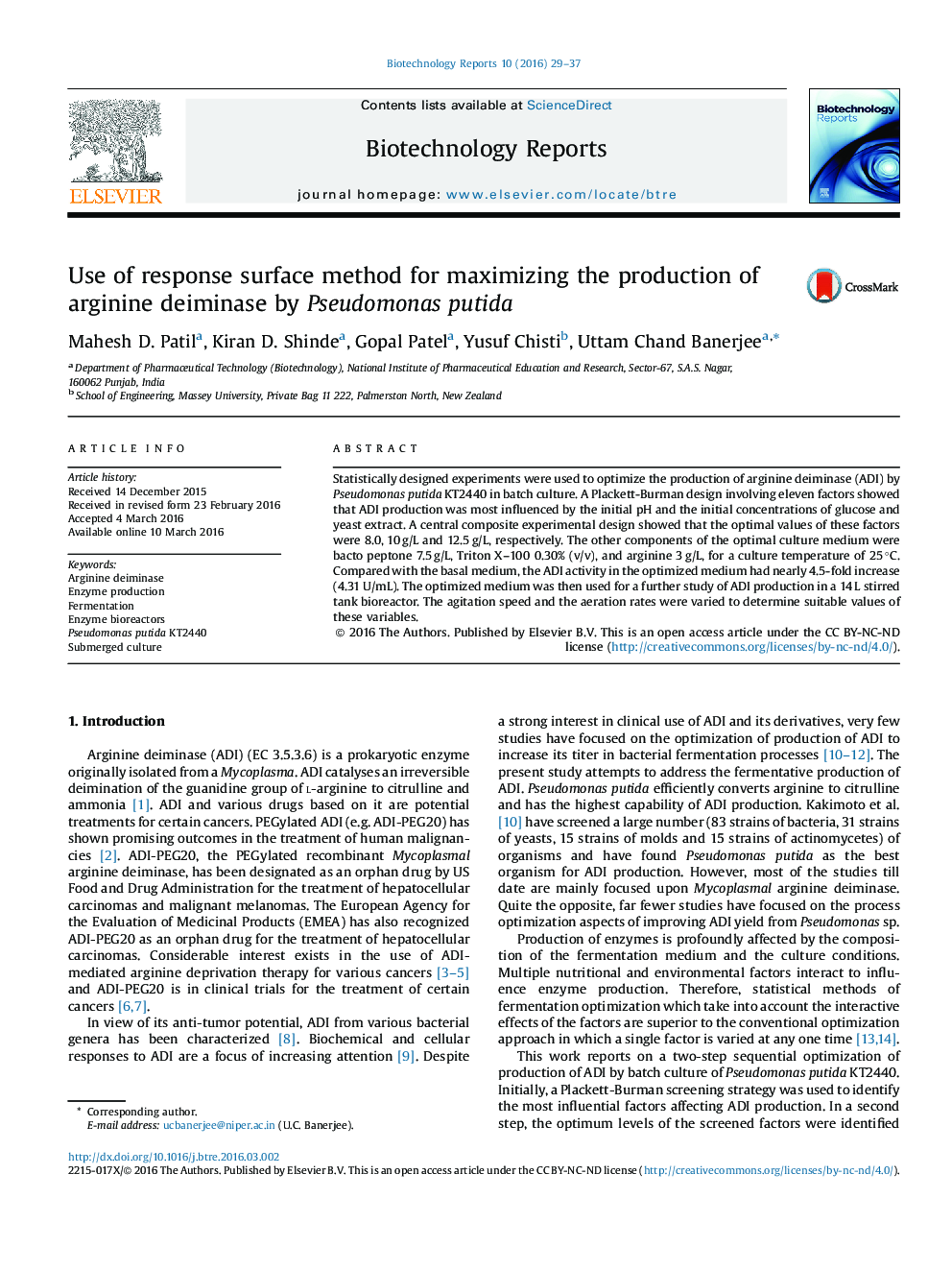| Article ID | Journal | Published Year | Pages | File Type |
|---|---|---|---|---|
| 870560 | Biotechnology Reports | 2016 | 9 Pages |
•First report on Arginine deiminase production from Pseudomonas putida using RSM.•Optimum conditions for ADI production were established in shake flasks.•ADI production was assessed in a 14 L bioreactor under the optimized conditions.•Repressor effect of aeration on ADI production was observed in 14 L bioreactor.•Substantial improvement of 4.5-folds in ADI titre was achieved.
Statistically designed experiments were used to optimize the production of arginine deiminase (ADI) by Pseudomonas putida KT2440 in batch culture. A Plackett-Burman design involving eleven factors showed that ADI production was most influenced by the initial pH and the initial concentrations of glucose and yeast extract. A central composite experimental design showed that the optimal values of these factors were 8.0, 10 g/L and 12.5 g/L, respectively. The other components of the optimal culture medium were bacto peptone 7.5 g/L, Triton X–100 0.30% (v/v), and arginine 3 g/L, for a culture temperature of 25 °C. Compared with the basal medium, the ADI activity in the optimized medium had nearly 4.5-fold increase (4.31 U/mL). The optimized medium was then used for a further study of ADI production in a 14 L stirred tank bioreactor. The agitation speed and the aeration rates were varied to determine suitable values of these variables.
